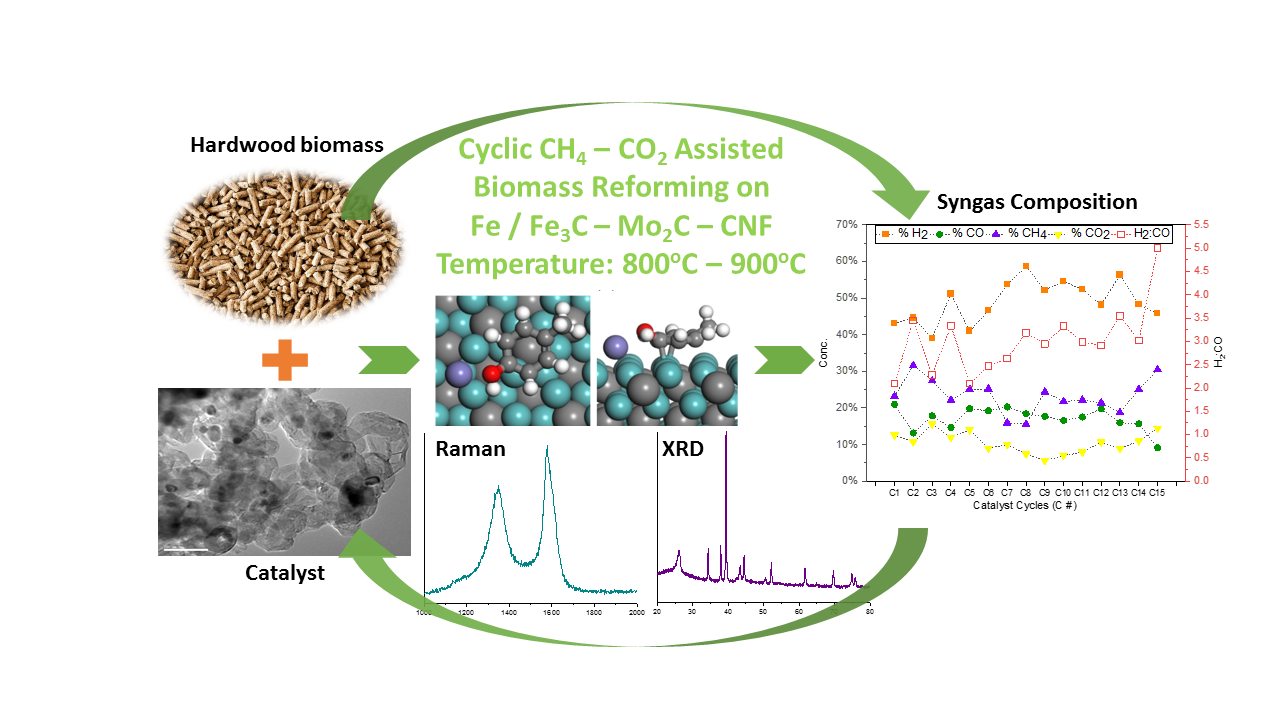2020 Virtual AIChE Annual Meeting
(200c) Flare Gas – Carbon Dioxide Assisted Synergistic Biomass Reforming for Hydrogen Rich Syngas Production on Self-Regenerable Carbon Nanofiber (CNF) Supported Fe – Mo2c Catalyst
Authors
Lalsare, A. - Presenter, West Virginia University
Leonard, B., West Virginia University
Vukmanovich, R., West Virginia University
Dumitrescu, C., West Virginia University
Hu, J., West Virginia University
Biomass reforming for hydrogen rich syngas production was achieved through synergistic co-processing with flare gas and carbon dioxide over Fe-Mo2C catalyst supported on carbon nanofiber (CNF). Methane â carbon dioxide activated biomass gasification can produce syngas with H2:CO of 2 to 4 with H2 product concentration ranging from 40 to 70 vol.%. Hydrogen rich syngas was generated over 15 cycles on Fe-Mo2C catalyst at temperatures of 800oC, 850oC, and 900oC with varying Fe loading of 0.5 to 5 wt.% and Mo2C concentration of 4 wt.%. CNF supported catalyst subjected to multiple cycles showed excellent resistance to deactivation and was discovered to be self-regenerable. The amount of iron loading was instrumental in the nature of support synthesized from pyrolysis at 700oC. Results showed that 0.5Fe catalyst led to synthesis of graphene supported nanoclusters of Fe and β-Mo2C, whereas 2.5% Fe and 5% Fe loading materialized into CNF / CNT supported nanoparticles of Fe, β-Mo2C. Conversion and gas yield nosedived to < 20% in 2 of 15 cycles on Fe-Mo2C-CNF catalyst. These regeneration cycles possibly indicate nucleation or saturation of graphene layer synthesis or CNF growth. Nucleation of regeneration occurred mostly in cycle 2 and continued until saturated regeneration cycle varying in occurrence from subsequent cycles. Self-regeneration was the effect of free-C on the surface and complete conversion of Fe0 active sites to Fe3C / Fe3C1.5 active sites. Once elemental Fe was converted to Fe3Cx, free-C led to 2D graphene layer formation on 2.5% Fe and 5% Fe catalysts. On graphene supported 0.5% Fe catalysts, CNF growth was observed on Fe3C. Mo2C active sites were much stable and did not participate in catalyst regeneration process. Self-regeneration mechanism for the CNF supported catalyst was proposed incorporating carbon from lignin oxygenates after being hydrodeoxygenated on β-Mo2C in the framework of original mechanism from methane reforming perspective.


